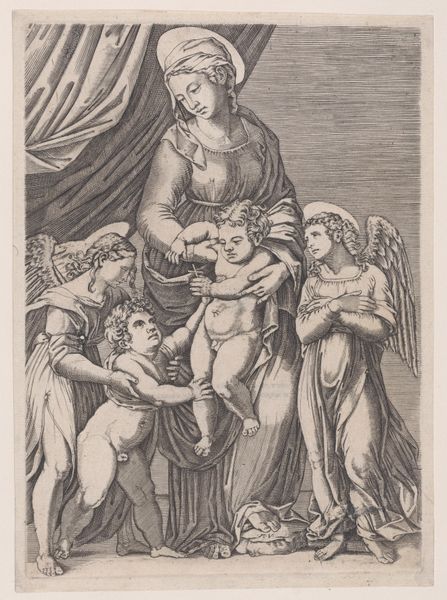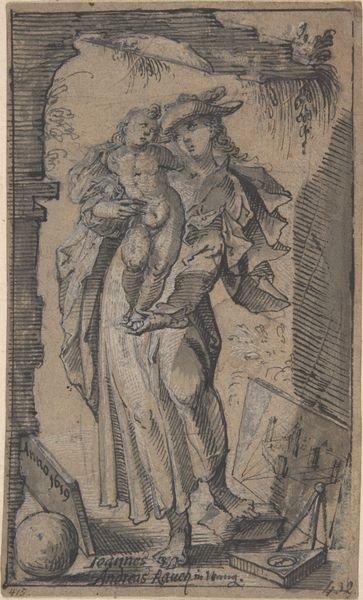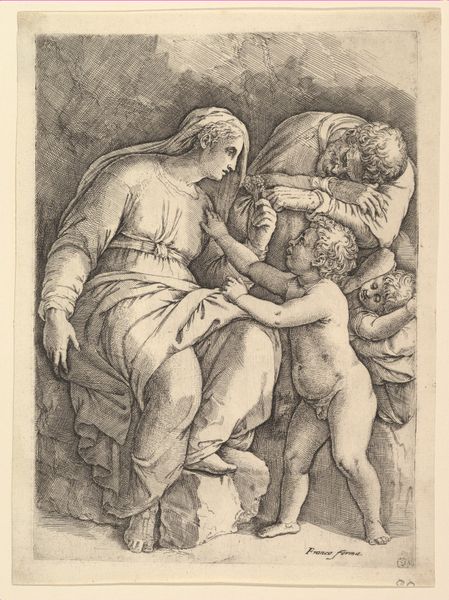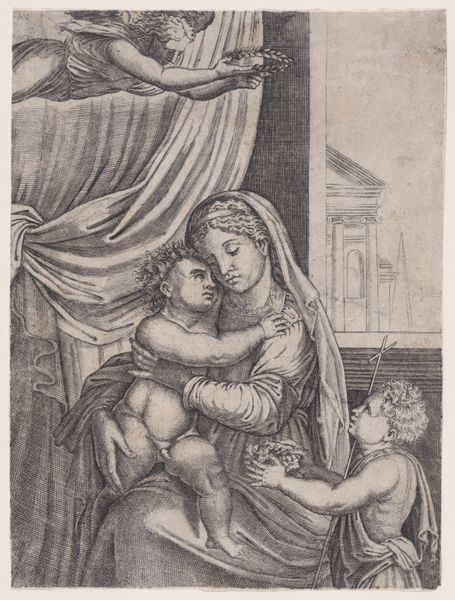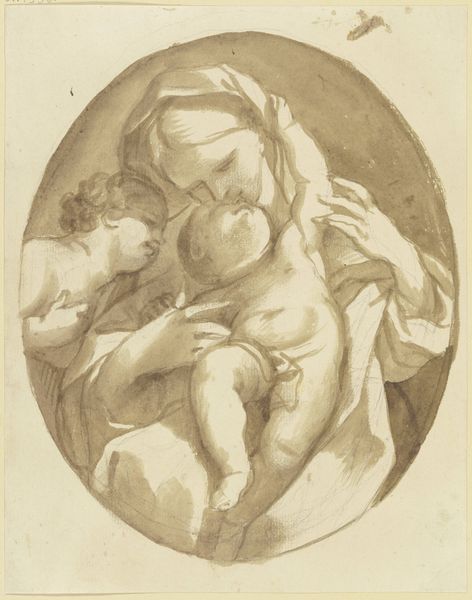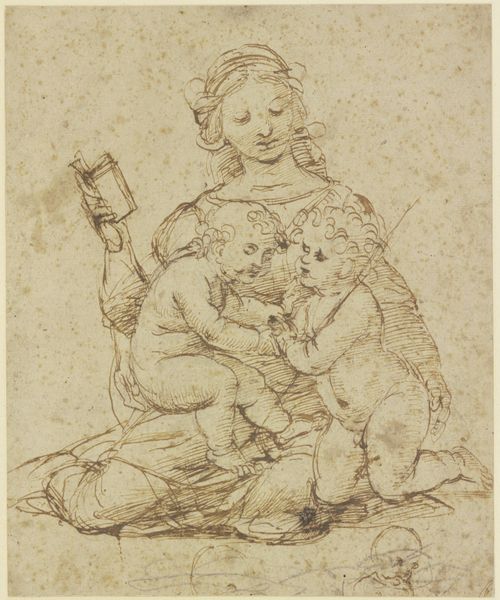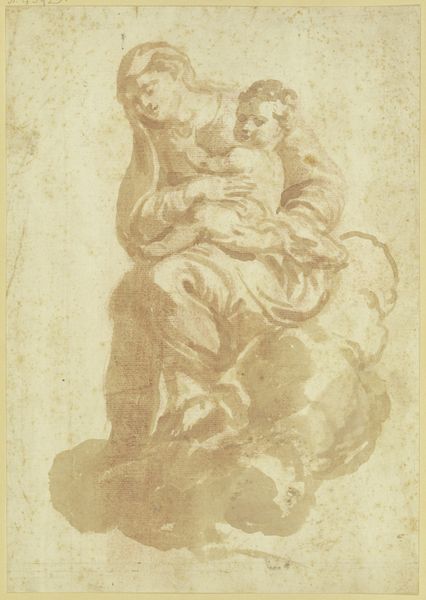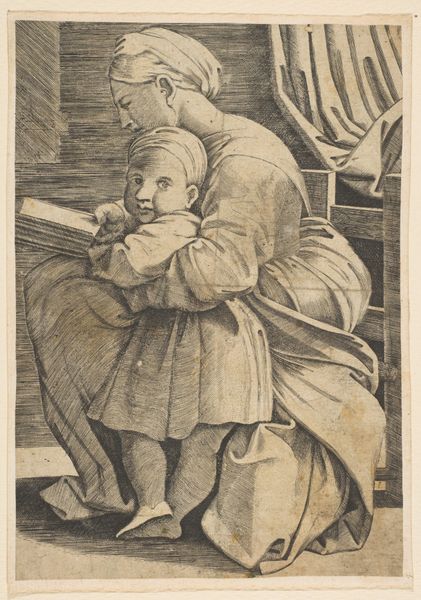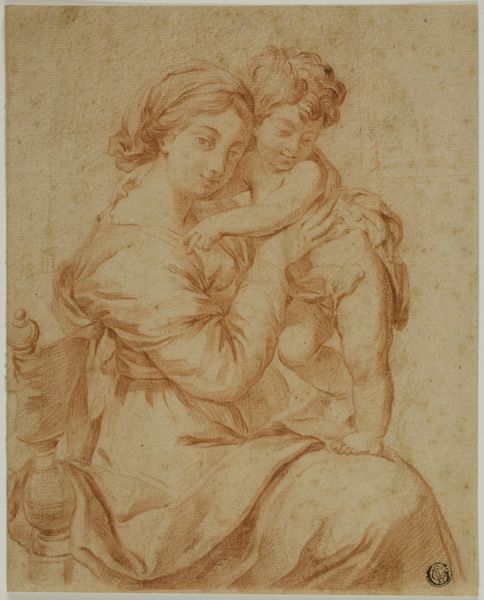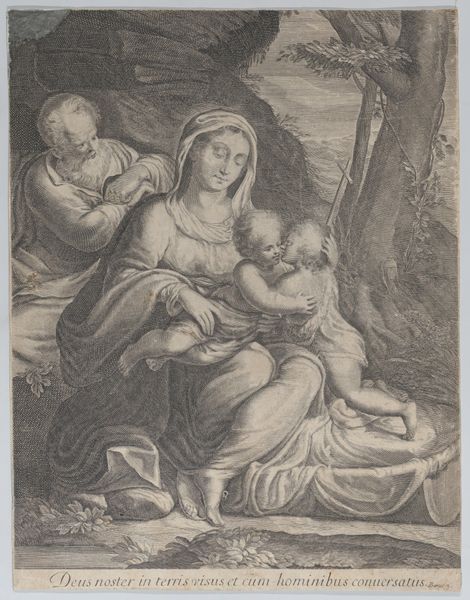
drawing, print, pencil
#
portrait
#
drawing
# print
#
pencil sketch
#
caricature
#
figuration
#
child
#
pencil
#
history-painting
#
italian-renaissance
Dimensions: Sheet (Trimmed): 9 1/16 × 6 3/4 in. (23 × 17.2 cm)
Copyright: Public Domain
Editor: We’re looking at "Virgin and Child," a pencil drawing printed between 1525 and 1535 by Edmond Douet. The child looks almost…unhappy? It strikes me as a less idealized, more human portrayal of Mary and Jesus than I expected from that time. What do you see in this piece? Curator: I see a powerful tension between the ideal and the real, wouldn't you agree? We are dealing with an artwork born out of a very specific religious and patriarchal structure. The Renaissance idealized the Virgin Mary as a symbol of purity and divine motherhood. But Douet’s portrayal disrupts that static image. Consider the child's visible distress— it humanizes the holy figures and also introduces a moment of potential critique. How does the mother's expression strike you? Editor: She seems detached, almost wary, not exactly filled with motherly affection, right? Curator: Precisely. Think about the limited agency women possessed in 16th-century society, especially regarding motherhood. While celebrated, they were often confined by its demands. Might this depiction subtly acknowledge the complex realities of motherhood? Perhaps it's asking us to consider Mary not just as a sacred figure, but as a woman navigating a socially prescribed role? Is Douet suggesting an underlying commentary? Editor: That’s fascinating! I hadn't thought about it in terms of questioning those societal roles. So, beyond the surface, it reflects a much deeper commentary on identity and constraints? Curator: Exactly. And that's where art history meets contemporary feminist theory. This drawing lets us rethink conventional narratives. It's not just a religious scene, but a potential exploration, or at least intimation, of the burdens placed upon women, veiled by its sacred subject. Editor: That gives me so much to think about regarding how we view historical artworks. Thanks! Curator: My pleasure. It's precisely this kind of critical questioning that keeps art history vibrant and relevant.
Comments
No comments
Be the first to comment and join the conversation on the ultimate creative platform.
